Programming
Direct3D 12 & Vulkan rendering engine
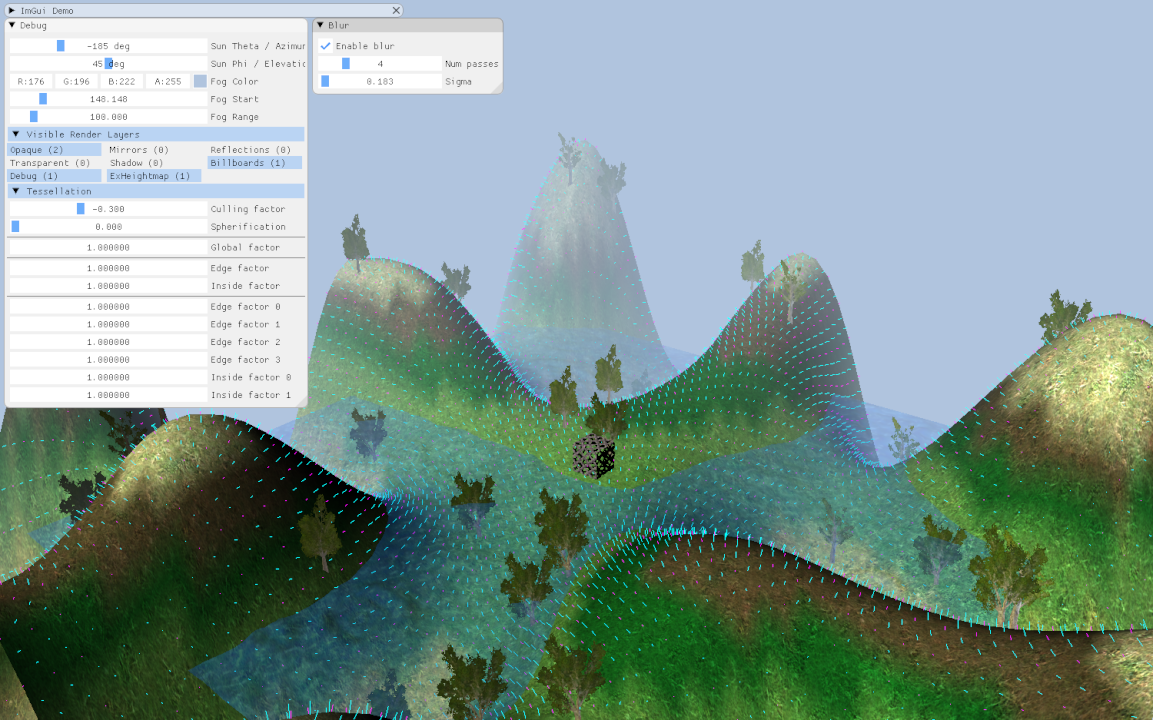
New rendering engine written entirely in Rust that has been in development while learning Direct3D 12, making sure it also works on Vulkan which I've learned recently.
Used technologies: Windows API, Direct3D 12, Vulkan, Dear ImGui.
Virtual Drum-kit with ManusVR gloves
After finishing my master's thesis I had a couple of hours left to play with the VR gear.
Used technologies: Unity3D, SteamVR, HTC Vive, Vive Tracker.
VR Training Simulator with ManusVR gloves
The goal of my master's thesis was to create a VR simulator for practicing various routines, often requiring interactions with tiny objects.
Used technologies: SDL2, GLM, OpenGL 4.3 Core, ManusVR, HTC Vive, Vive Trackers, OpenVR.
VR hand controller demo
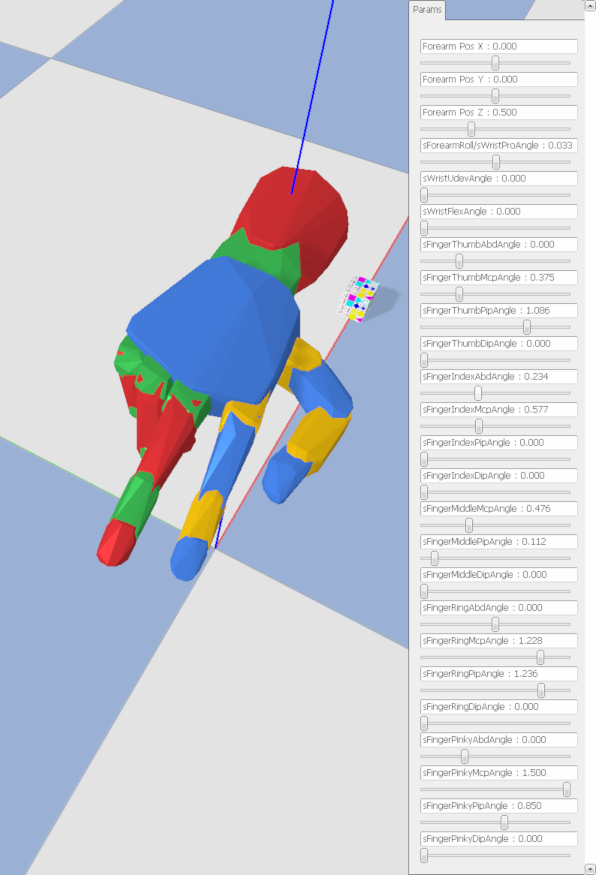
Pre-production application developed during my master's thesis while waiting for HTC Vive. It read all the sensor data from ManusVR glove to control the virtual hand. The main goal of this application was to prepare a rock-solid and precise hand model.
Used technologies: bullet3, ManusVR.
Vice City 1 Draw Call Renderer
The main goal was to render the whole Vice City in just one draw-call, which many said its impossible. Once finished, this project was also used to learn modern graphics APIs, like Direct3D 12 and Vulkan by porting this renderer to those APIs. This renderer has also been ported to PlayStation 3 (but it used more than 1 draw call) -- nevertheless, it was a great learning opportunity.
LinkUsed technologies: SDL2, GLM, OpenGL 4.5 Core, Vulkan, Direct3D 12, premake5.
4096 Skeletal animated instances
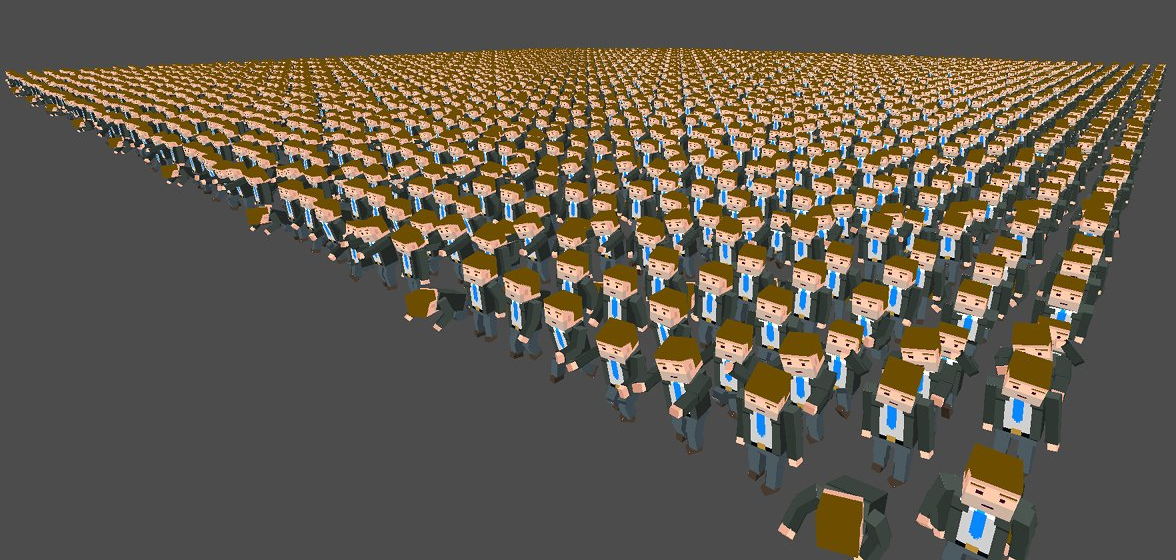
Custom data-oriented skeletal animation compression algorithm with efficient player built on-top of custom work-stealing task scheduler.
Used technologies: SDL2, OpenGL 3.3 Core, Assimp, stb_image.
Monte Carlo 3D mesh volume calculator
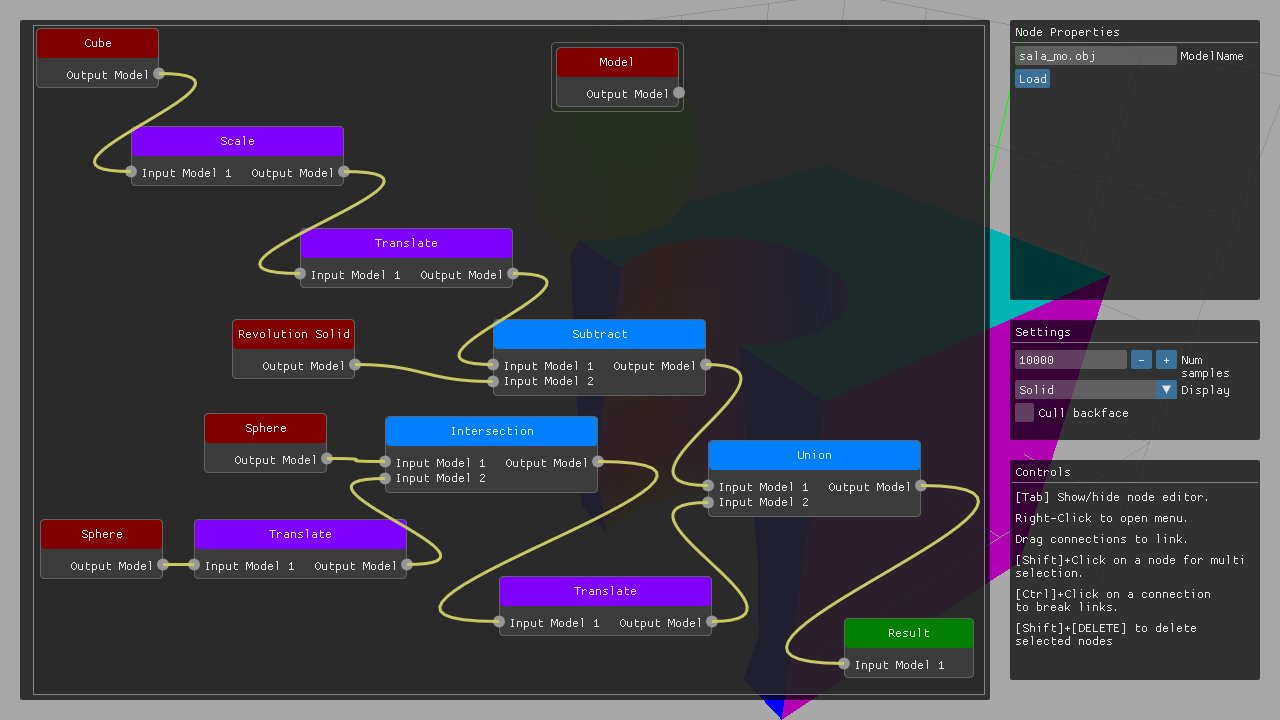
The assignment was to create a Matlab script (or console application) to load a 3D mesh and estimate it's volume, but this one ended up with lots of extra features, like node-based editor with live preview, CSG support, Spline-based revolution solids just to name a few.
Used technologies: SDL2, GLM, OpenGL 3.3 Core, Dear ImGUI, Assimp.
Landmark-based face swapper
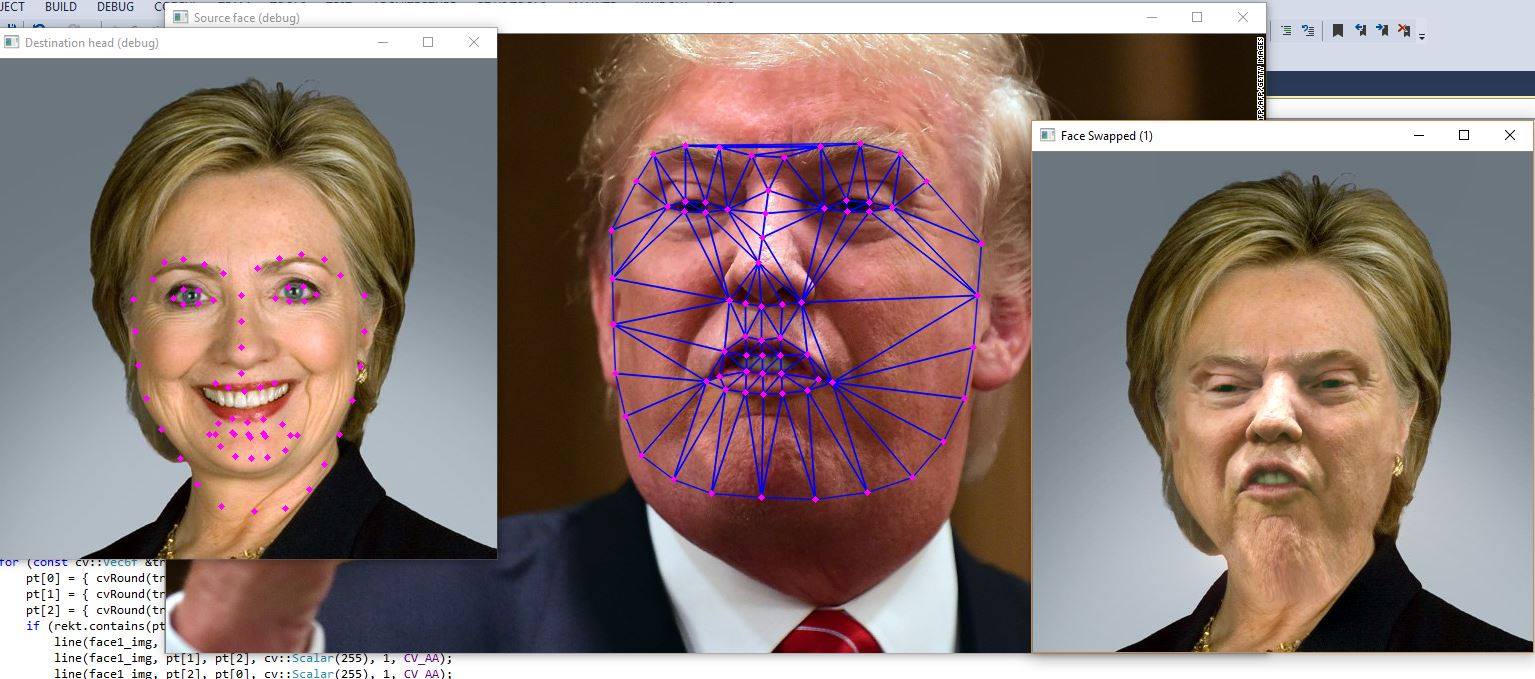
Application co-developed with a friend of mine as one of the assignments. It swapped the faces of people in real-time, either from camera-input or pre-recorded movie.
Used technologies: OpenCV, dlib.
Raytracer
Started as an exercise... but it quickly received some extra features like Microfacet BRDF with GGX NDF, fullscreen post-processing effects, data-driven XML formats and GPU acceleration via OpenCL.
Used technologies: SDL2, GLM, pugixml, OpenCL.
Modular polyphonic soft-synth
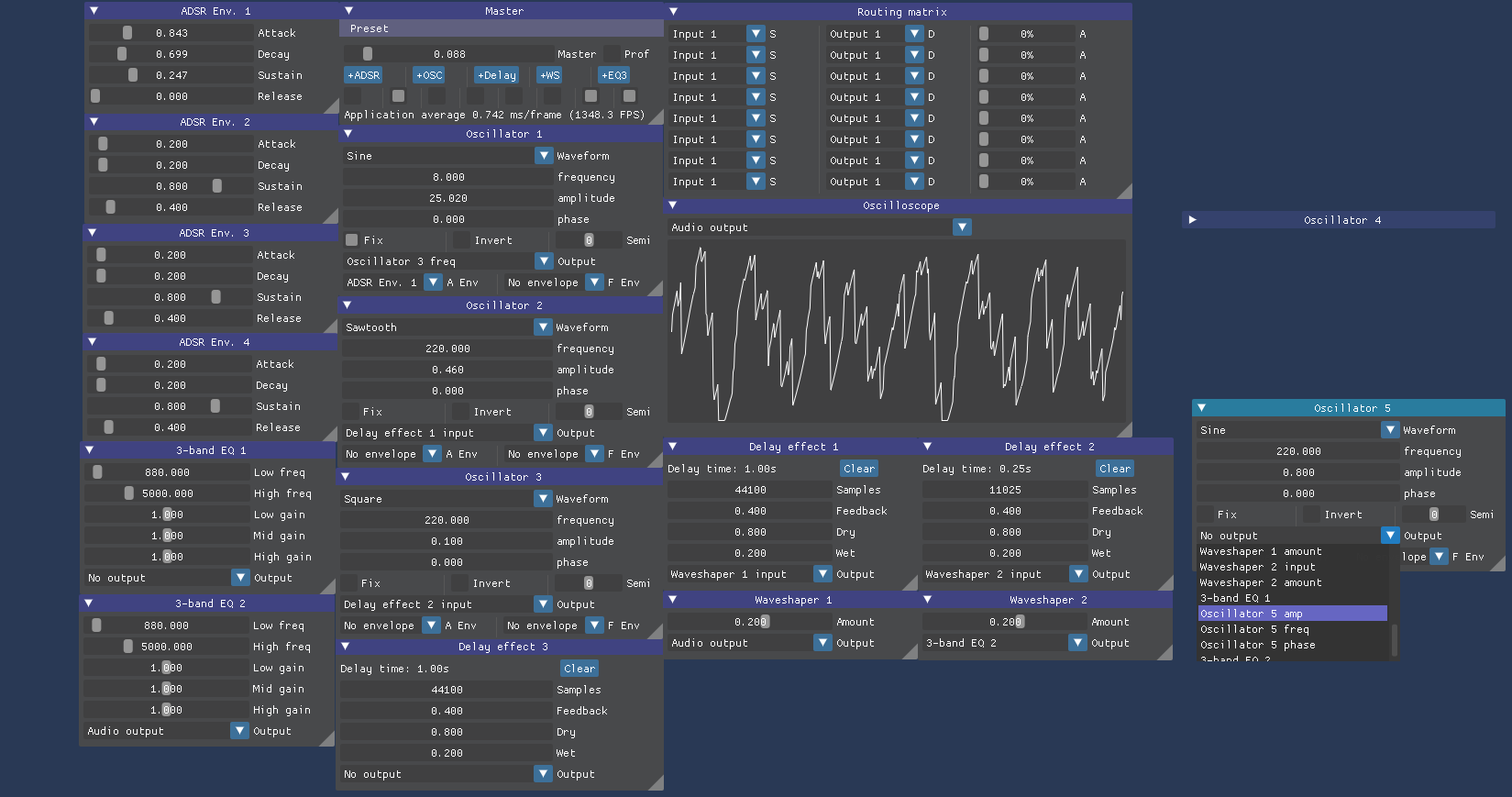
My first polyphonic software synthesizer with basic MIDI support.
Used technologies: SDL2, Dear ImGUI, rtmidi.
Point-cloud me
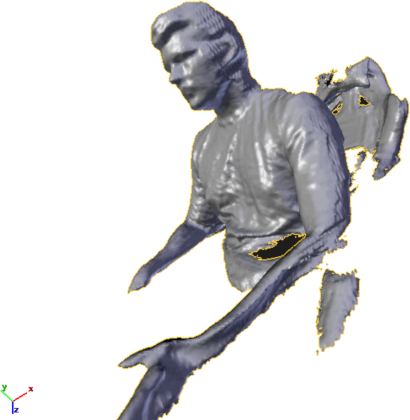
What can you do after you borrow an Xbox Kinect camera? I tried to play with the depth image and motion tracking in order to 3D scan myself. The results where not impressive due to not-high-enough resolution, yet very exciting experiment!
Shuriken Game Engine
This was the engine that powered the submission for Szczecin Gamedev Talents 2015. It had fully-featured asset processing pipeline with highly-optimized binary formats, data-driven renderer with automatic batching. Games could be written in Lua 5.1 and MoonScript. While the final game has been downgraded to forward rendering, the engine supports deferred rendering.
Used technologies: SDL2, OpenGL, GLM, LuaJIT 2, Bullet Physics, Assimp, OpenAL, premake.
Submission for Szczecin Gamedev Talents 2015
A cross-platform, time-trial racing game developed for 8th Szczecin Gamedev Talents competition. The only requirement was to use only hand-crafted rendering engines. Unfortunatelly the target PC was not powerful enough forcing me to remove some effects. It also had a stunt mode where users where allowed to build their own levels using built-in editor and then play on them. During the 2 month period this game had multiple variations and iterations.
Used technologies: SDL2, OpenGL, GLM, LuaJIT 2, Bullet Physics, Assimp, premake, Blender.
Yet Another Minecraft Clone
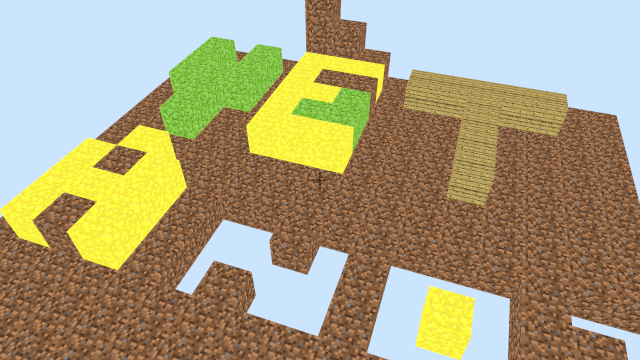
Used technologies: PyOpenGL.
Frame OS
A very simple protected-mode kernel, first written in FASM and then in C. It booted entirely from a 3.5" floppy disk and supported only the FAT12 file system. Unfortunatelly the VESA 3 driver was never finished and the project has been basically dropped.